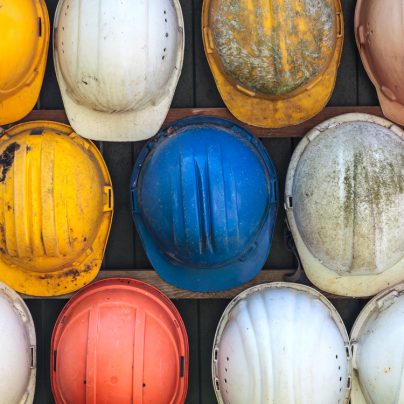Construction Safety Wear
The construction industry demands the very highest in safety standards and thanks to its adherence to the value of human life, the equipment, machinery and construction clothing within this ever-evolving field of business continues to improve. Yet which safety clothing is best for the men and women of the UK who work day and night to complete the structures which we work and live in? We delve further into the clothing options for the construction industry:
A simple pair of trousers which are not designed with the specific safety standards of a construction site in mind will not be suitable for a work site. Trousers need to be designed for the most rigorous of conditions, with triple stitching to prevent tearing and multiple pockets to store tools, loose parts and so on. With a sturdy poly-cotton blend, construction trousers are able to provide maximum protection and minimum heat loss. There is even the possibility of acquiring work trousers with detachable knee pads as well as paneling detail to reduce excessive hem wear. For those who require trousers for the factory, it is best to ensure that they are EN470 compliant, or flame retardant. For welders, or those who require safety clothing in the most extreme of conditions, this level of protection must be met.
What are the correct safety boots to select for your business? Do you require steel-toed boots to protect from falling equipment, shock-absorbing soles (a must for electricians) or boots which are designed for chemical resistance? For both men and women, a water-resistant pair of boots with non-slip soles is a necessity. If you are in the market for a steel-toed boot, then ensure that it is of the correctly graded puncture-resistant material. Protective shoes with steel-toed caps must be EN345 compliant, this ensures that they cap can withstand up to 20kgs of pressure or 1.5 tons rested on the toe area.
- Outdoor clothing – Jackets, Hi-Vis shirts and so on
A thick, lined jacket is the best purchase, no matter what the season is. When this is combined with removable lining (suitable for summer or winter) and pre-work joints for freedom of movement, your chosen jacket suddenly becomes a useable clothing item which will protect in the harshest of conditions. PVC coating is another optional extra which has become standard on many of the newer jackets – PVC ensures that the jacket remains warm and water-proof. Hi-Vis garments are enforced under the EN471 safety classification. The higher the code (from 1 to 3), the better the chance that you will seen in your clothing.
As an added note we recommend that for full body protection, overalls may be the ideal option for your industrial needs. While overalls may not be to every construction workers tastes, they can turn any outfit into a construction clothing-grade uniform. Always ensure that your chosen protective clothing item is stamped with the approved safety code.

A chartered (fellow) safety and risk management practitioner with 20+ years of experience. David provides a healthy dose of how-to articles, advice and guidance to make compliance easier for construction professionals, Architects and the built environment. Get social with David on Twitter and Linkedin.



5 Comments
Hi Vis Workwear is a must in the construction industry. EN471 Class 3 is the normal standard for all construction workers to stay safe in their workplace. ENV343 will give an added level of protection against foul weather as will ENV342 clothing.
Really enjoyed the blog post, write some more.
Construction workers need to be very careful about their safety while working onsite. So, they are highly suggested to wear safety workwear when they leave for their work.
Thanks David, great advice about how we should look after our construction workers.
Thank you.